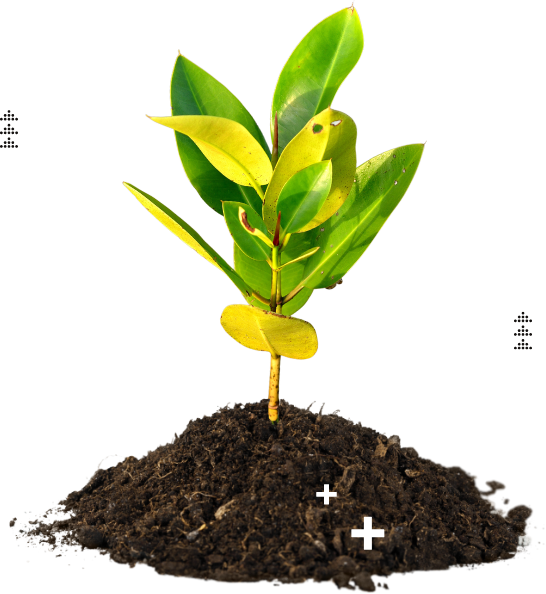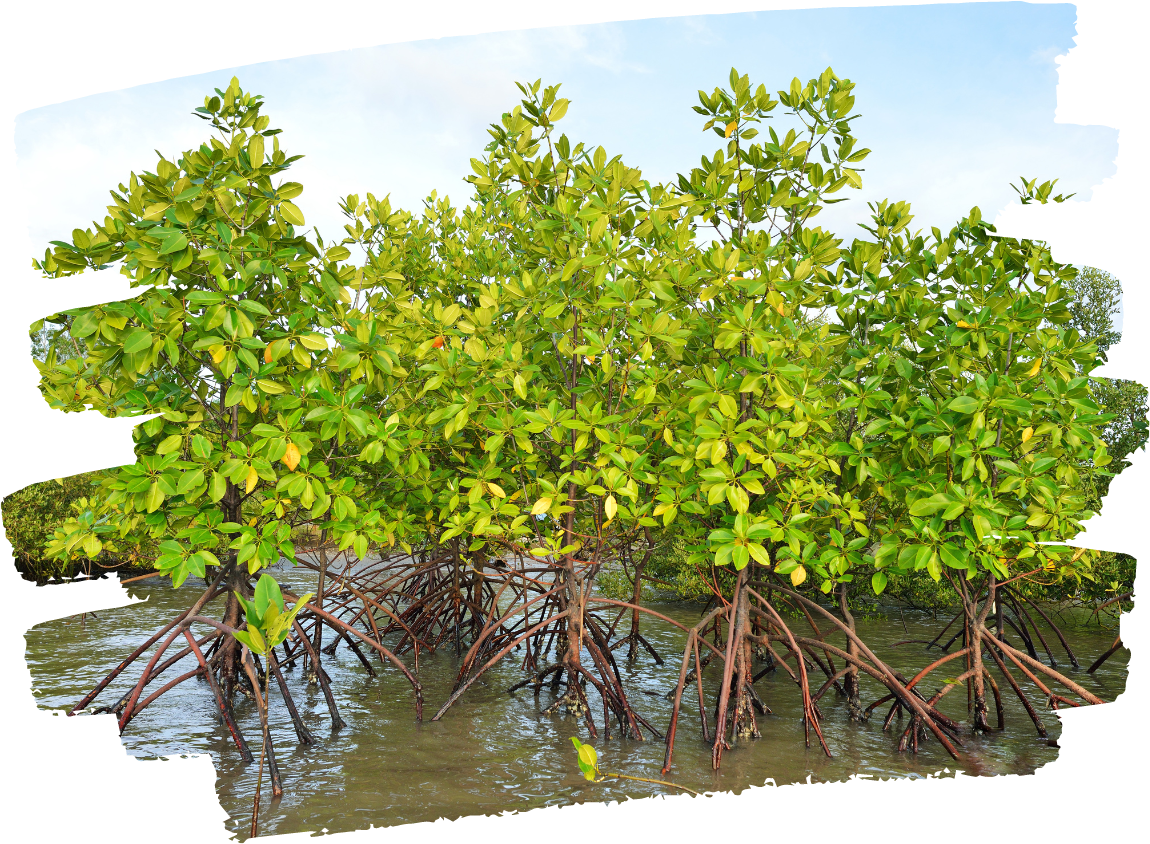
Mangroves are coastal ecosystems that thrive in the delicate balance between land and sea. They consist of various species of salt-tolerant trees and plants, which create intricate networks of roots that extend both above and below the waterline. This unique adaptation allows mangroves to capture and store carbon in significant amounts.

Coastal Protector
Protect against erosion and storm surges by acting as natural buffers

Fisheries
Essential nursery habitats for many fish species

Carbon Removal
1-hectare of mangrove forest can remove upto 30 tons of carbon dioxide per year
Mangroves, often referred to as "blue carbon" ecosystems, play a crucial role in sequestering carbon dioxide and offering a sustainable solution to combatting global warming.
They absorb carbon dioxide from the atmosphere during photosynthesis and store it in their roots, leaves, and surrounding sediment. This carbon is then locked away for centuries, providing a powerful tool in the fight against climate change.
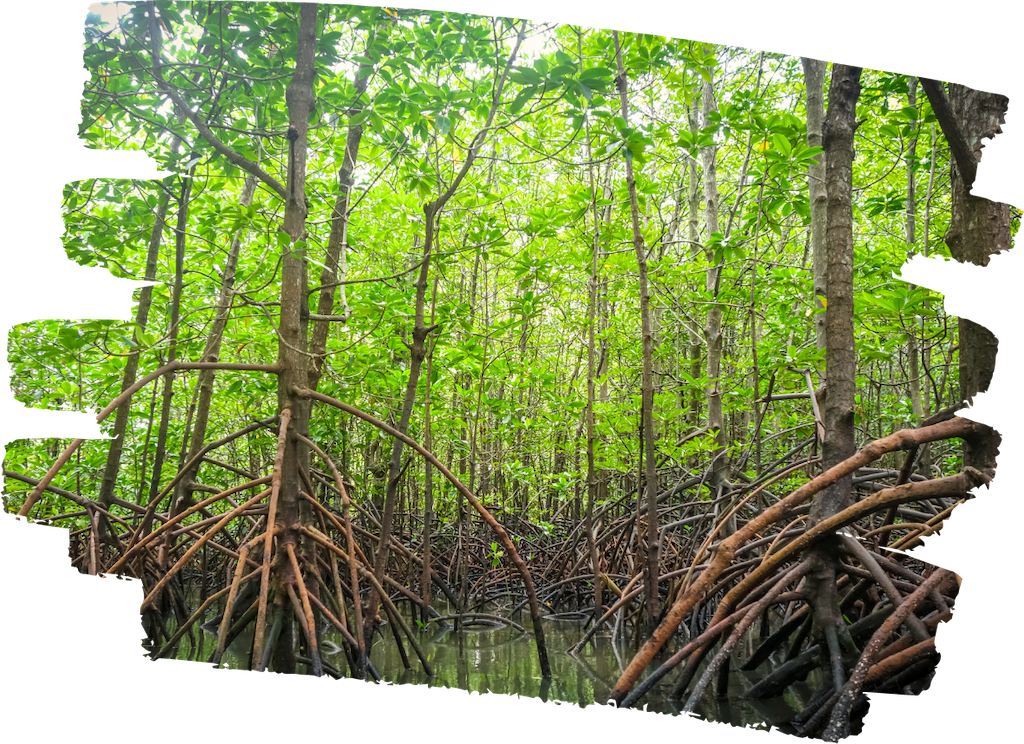

Mangroves, often referred to as "blue carbon" ecosystems, play a crucial role in sequestering carbon dioxide and offering a sustainable solution to combatting global warming.
They absorb carbon dioxide from the atmosphere during photosynthesis and store it in their roots, leaves, and surrounding sediment. This carbon is then locked away for centuries, providing a powerful tool in the fight against climate change.
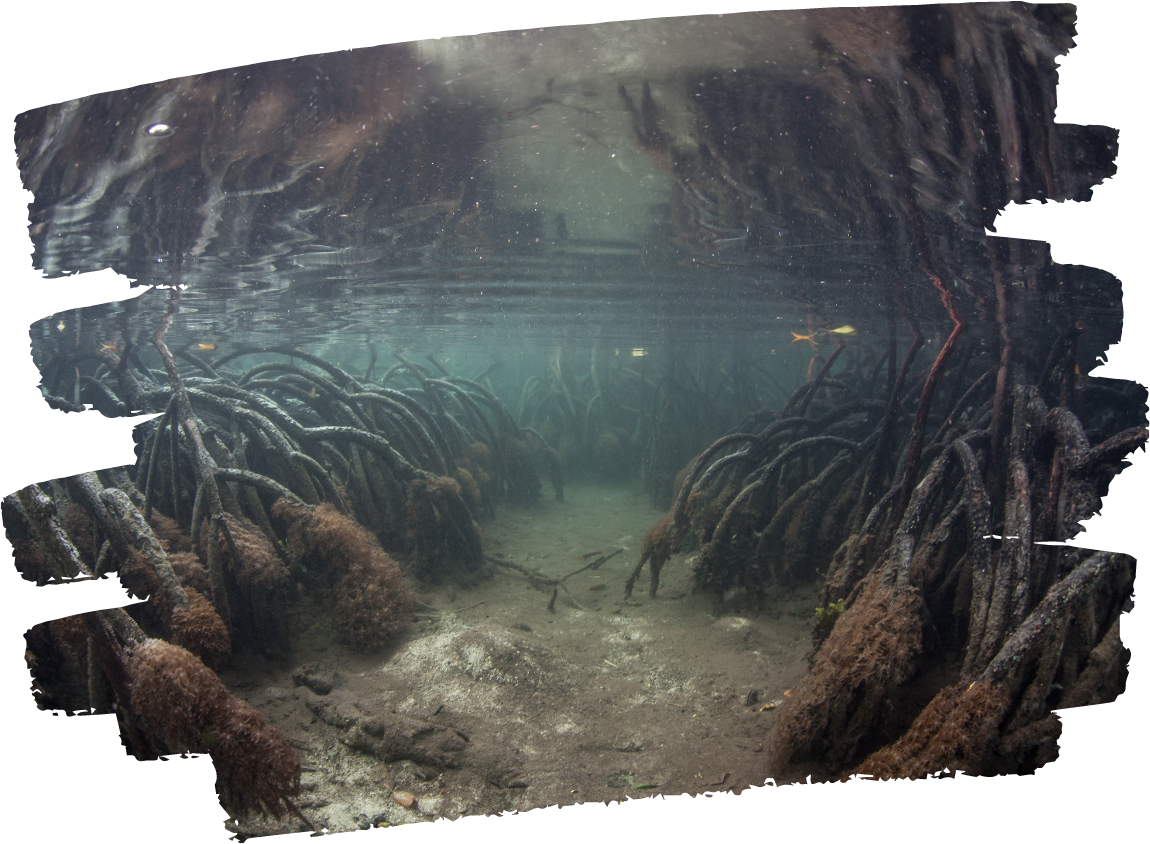
The dense network of mangrove roots and the trees themselves act as natural barriers that absorb and dissipate the energy of incoming waves.
This reduces the force of the waves reaching the shore during a storm, preventing them from causing significant damage.
Mangrove root systems help stabilize coastlines by binding and trapping sediments. This prevents erosion and ensures that the coastline remains intact even during strong waves and currents.
Mangroves offer shelter and protection to juvenile fish from predators, including larger fish, birds, and other aquatic animals.
Mangrove ecosystems are rich in organic matter and support a diverse array of microorganisms, algae, and small invertebrates. These provide a constant and readily available source of food for juvenile fish, helping them grow quickly and thrive.
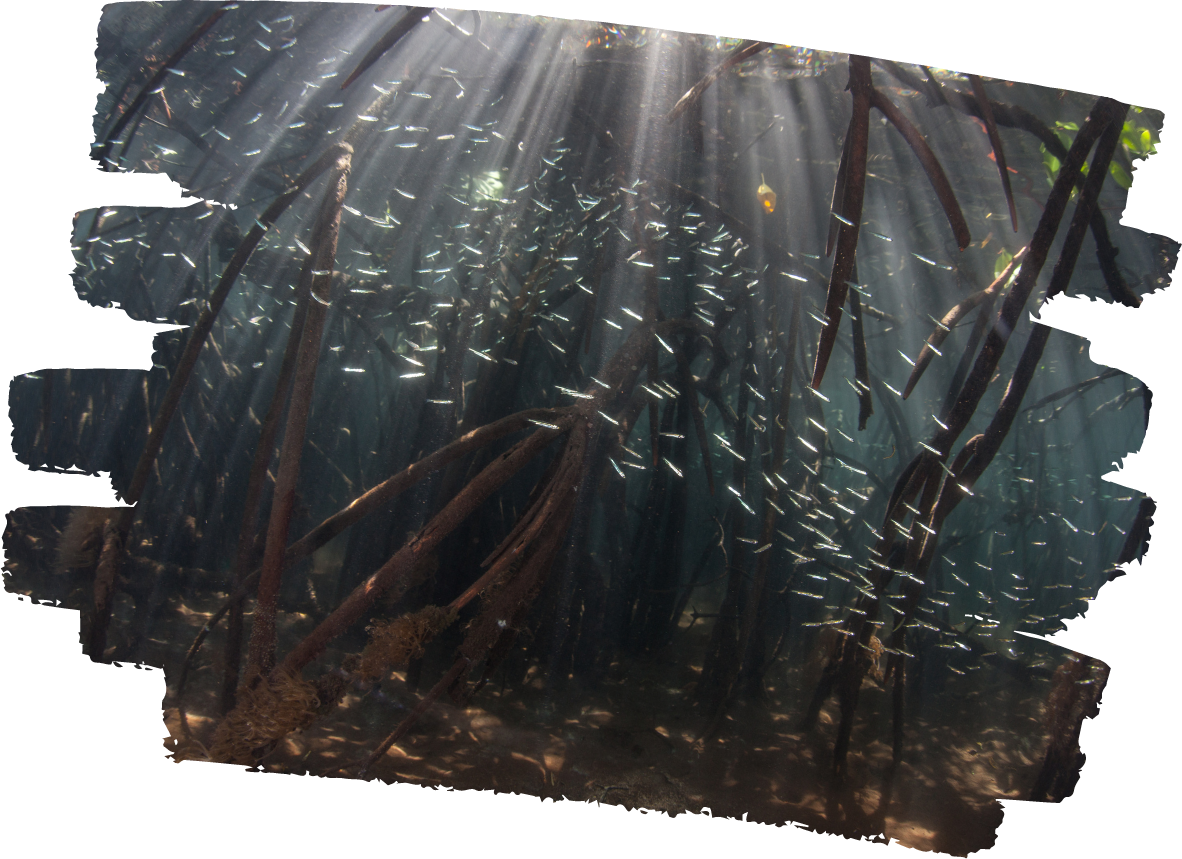

Mangroves offer shelter and protection to juvenile fish from predators, including larger fish, birds, and other aquatic animals.
Mangrove ecosystems are rich in organic matter and support a diverse array of microorganisms, algae, and small invertebrates. These provide a constant and readily available source of food for juvenile fish, helping them grow quickly and thrive.
779,987 ha
Mangrove forests in Mexico
3,353 ha
Lost per year the rate of 0.43%

100,590 tons/yearly
Lost carbon removal capacity annually

Agricultural expansion, notably shrimp farming, and urbanization have led to the clearing of mangrove forests to make way for these activities. Infrastructure development, such as ports and roads, also contributes to mangrove destruction as it often requires the conversion of these coastal ecosystems.
In some cases, mangrove trees are harvested for timber or firewood, leading to the degradation and deforestation of these ecosystems.

